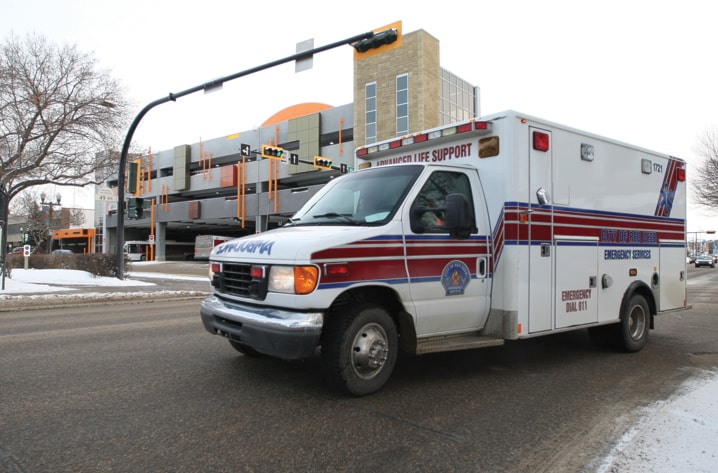Stripping Red Deer’s dispatch centre of its ambulance call duties could lead to longer response times, says the city’s fire chief.
“I would say there’s the potential for it,” said Jack MacDonald, who oversees the fire department and its dispatch centre staffed by 21 full- and part-time employees.
If ambulance dispatch for this area is shifted to Calgary, as the province plans, staff there may not be as familiar with local roads and addresses.
“I think dispatchers who are familiar with the area can be more helpful than ones who aren’t.”
The province released the long-awaited Health Quality Council of Alberta report on ambulances this week. One recommendation, accepted by the province, was to restart a 2009 plan — which was frozen in 2010 — to centralize ambulance dispatch from 35 centres to three. When halted, 12 centres, including Red Deer’s, were still dispatching ambulances.
Dr. John Cowell, Health Quality Council CEO, said concerns ambulance service and response times will suffer under centralization are unfounded.
The new dispatch centres will be equipped with the latest mapping technology with the capability of tracking ambulances across the province in real time, not unlike systems used by air traffic controllers.
“We have been assured that the technology is available and that the province is well down the road to making sure that is in place in the dispatch centres,” he said.
The new system will eliminate the current scenario where an ambulance travelling from Edmonton to Calgary will pass through five dispatch zones, none able to see the ambulance outside their zone. On top of that, ambulances can’t communicate with each other, he added.
This system of “isolated zones” gets in the way of sending the closest ambulance.
“You need to have the ability to dispatch your ambulance and crew that’s most appropriately located relative to the accident scene itself,” he said.
“We believe strongly that by consolidating into a minimum of two centres, regardless of where they are physically located, they are going to have an adequate knowledge of local as well as provincial addresses.”
Cowell said at the start there may be better local road knowledge, but that won’t last long once the system and dispatchers get up to speed.
“In the end, we believe that it’s going to be far faster, far more efficient and far safer for our citizens province-wide to have an integrated dispatch system.”
He pointed out that 911 dispatch centres, which includes Red Deer, will remain a local contact point. For instance, firefighters could be sent to act as first responders at incidents to which an ambulance is also heading.
MacDonald also has concerns that concentrating dispatch into two or three centres will make the system more vulnerable.
“Our concern with two centres, just Edmonton and Calgary, and the suggestion that if one of them has a failure that the other one could pick up the load, we believe it is something that really needs to be looked at strongly,” he said.
“There’s a capacity issue there in the system where we’re not sure one centre could handle both workloads.
“We’ve been advocating for years now that a number of other strong centres like ourselves would help take up the capacity in a situation like that.”
Cowell said the whole point of recommending at least two dispatch centres was to ensure there was backup if one went down.
“Each of these dispatch centres actually would have the capacity to handle the province.”
That will be an improvement over the existing situation, where dispatch centres don’t have adequate backup, he said.
When the province called a halt to centralization in 2010 it was facing criticism, especially from rural areas, where the perception was response times were getting worse.
Cowell said extensive research failed to find records to back those fears up.
He has no doubt the centralized system will provide better response times and care.
“In other words, the status quo is not good enough. We believe the future is the right way to go.
“And, in fact, Alberta Health Services has a huge obligation to get this done in a very timely fashion.”
Health Minister Fred Horne has given staff until the end of March to come up with an implementation plan. Cowell believes the system could be up and running in nine to 12 months.
pcowley@www.reddeeradvocate.com
